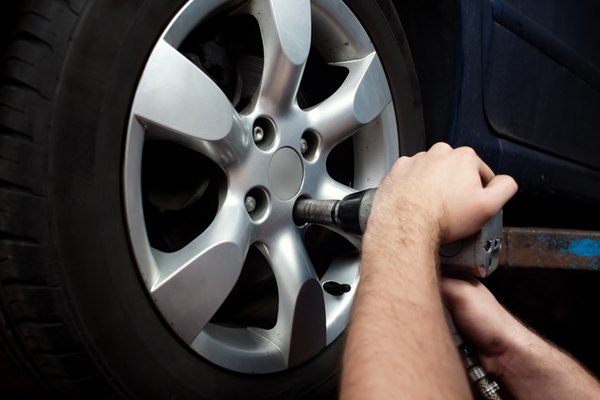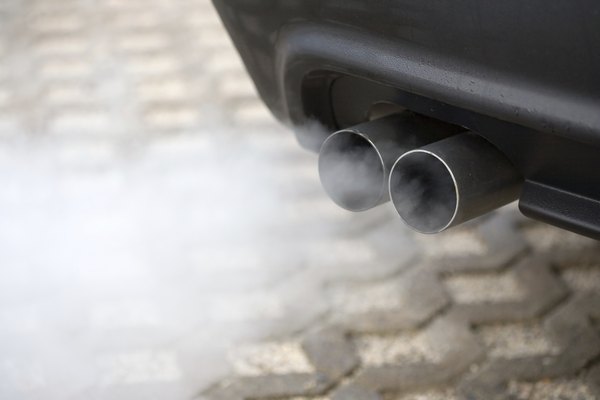Definition of Fair, Good & Excellent in the Kelley Blue Book
by Meg CampbellUpdated July 12, 2023
Originally published as “Blue Book of Motor Car Values”, the Kelley Blue Book has been in use since 1926, when Les Kelley, a used car dealer, realized that his car valuation list (which he’d been using since the early 1920s) provided a service to other car dealers. The guide received a significant vote of trust during World War II, when the U.S. government decided to put an upper limit on used car prices, and used Kelley’s Blue Book to set the standards. It was exclusively a trade publication (used among dealerships) that evaluated fair market ranges until 1993, when it was published specifically as retail price information for public car buyers. Here’s a guide to the Kelley Blue Book values to help determine pricing information for your car.
Assessing a Car’s Condition

Kelley Blue Book has four condition classifications for used cars, boats, and motorcycles: excellent, good, fair, and poor condition. Very few used cars fall into the excellent category; most fall into the good or fair categories. The Blue Book assessment quiz takes into account several specific aspects of the exterior, interior, and mechanical conditions, as well as whether or not the vehicle has complete maintenance records, passes emissions testing and has a clean title. Kelley Blue Book’s estimate will affect your car’s trade-in value or asking price, given your local market conditions.
Excellent Condition

A vehicle is deemed in excellent or very good condition by KBB vehicle values if it appears and drives like a new car, hasn’t had bodywork (including paint), lacks rust, is in perfect mechanical condition, and doesn’t require any repairs whatsoever. The interior should be as clean as a new vehicle. The engine should have no observable flaws or fluid leaks. The engine should also appear to be free of wear and tear. A car in excellent condition has an entire (provable) record of service and a clean title history. According to Kelley Blue Book, “less than 5 percent of all used vehicles fall into this category.” It will have a much higher market value than cars that fall into one of the categories below, which means you can potentially expect decent instant cash offers as a starting point from an autotrader.
Good Condition

A certified pre-owned vehicle in good condition also has a clean title and no significant mechanical issues—any issues that it might have should be easily repairable. A car in good condition, on the whole, must not have any major automotive flaws (no body damage). The interior and exterior have very few, if any, apparent dings, scratches or defects, and the paint job is still shiny. The body of the car should be rust free or have very little rust. If the tires—which all match—show wear, it isn’t much, and they have considerable life left. KBB notes that the largest percent of owned cars fall into this classification, which would reflect in their sale price.
Fair Condition

KBB values assess a used vehicle’s retail value as fair if its tires need replacement, it has any rust (which must be repairable to be classified in fair condition), it possesses some defects in the engine or other mechanical systems, or any visual flaws (in the paint job or the interior). Any imperfections or defects must be serviceable or repairable, and, according to Kelley Blue Book, the car must be “in reasonable running condition.”
Poor Condition

According to kbb.com, “Kelley Blue Book does not attempt to report a value on a ‘poor’ vehicle because the value of these vehicles varies greatly. A vehicle in poor condition may require an independent appraisal to determine its value.” However, they do have a short criteria for what generally constitutes poor condition. If, for a example, a CPO’s mileage can’t be confirmed, or its title isn’t clean (i.e. a salvaged or previously flooded car), or the car has mechanical issues that can’t be repaired, it’s deemed in poor condition. Having severe rust and not running well also qualify a car as in poor condition and affect the listing price.
References
Writer Bio
Based just outside Chicago, Meg Campbell has worked in the fitness industry since 1997. She’s been writing health-related articles since 2010, focusing primarily on diet and nutrition. Campbell divides her time between her hometown and Buenos Aires, Argentina.







